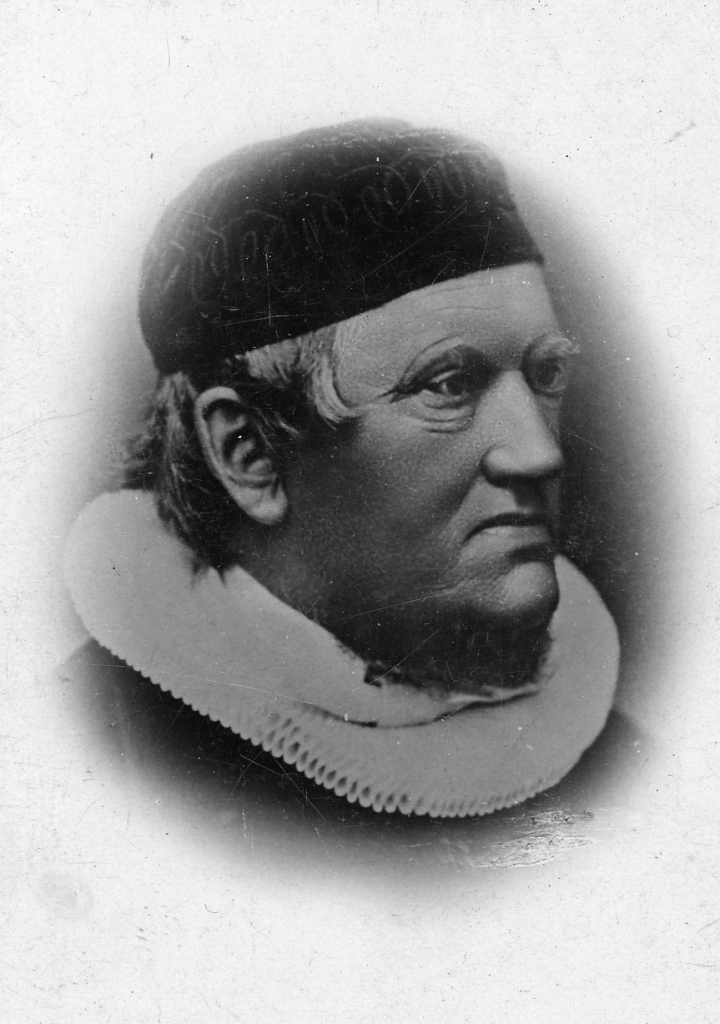Rødding Frimenighed (Rødding Independent Congregation)
Rødding Frimenighed (Rødding Independent Congregation) is Southern Jutland's first Grundtvigian congregation, established on 30 June 1874. On this day, high school principal Cornelius Appeal was ordained as the congregation's first priest at Askov Højskole.
For the first few years, the services were held at Højskolegården in Rødding. It was not until 1909 that the congregation got their own church in Rødding, designed by architect Magdahl Nielsen from Copenhagen.
Refused to take the oath
The history of the independent congregation starts in 1867, when the priest for Rødding and Skrave Parish, Hans Sveistrup (1815-1893) was ousted by the Prussian authorities because he refused to take the oath to the Prussian king.
Hans Sveistrup continued to live in the area, where every Sunday he held prayers for a large audience either at Højskolegården in Rødding or in large drawing room at Beistrupgård in Københoved. Conversely, the new pro-German pastor preached in deserted churches.
Hans Sveistrup was not allowed to hold actual services with baptism and communion. He managed to do so by moving the services to Denmark, where he borrowed churches in Vejen or Kalvslund. However, this ecclesiastical traffic across the border was quickly stopped by the German authorities.
So instead, Hans Sveistrup tried emergency baptism, a practice which the German authorities quickly put an end to. The congregation responded straight away. In February 1870, the first pro-Danish Grundtvigians withdrew from the Prussian state church. The first resignation came from Jørgen H. N. Skrumsager on Bennetgård in Københoved.
Went into exile
After the German victory in the Franco-German war in 1870, the authorities increased their surveillance of the pro-Danish Southern Jutlanders. Sunday assemblies had to be abandoned. Hans Sveistrup went into exile north of the river Kongeå. The local parishioners found a solution to this problem. Sunday assemblies were resumed with Cornelius Appel as priest.
In the summer of 1874, the German authorities announced that the Danish priests visiting Schleswig no longer had permission to speak at the Sunday meetings. This was the straw that broke the camel's back. The result was the creation of Rødding Frimenighed.
Lecture hall converted into a church
Rødding Højskolegård became the independent congregation's home, where the lecture hall was converted into a chapel with a baptismal font, altar table, altar rail and pulpit.
The authorities' response came immediately. On 10 September 1874, they announced that Sunday assemblies in the independent congregation were not true church services and therefore could not be held on important holy days. This meant that they could not hold church services on major holy days. On ordinary Sundays, the service could only begin after four o'clock in the afternoon.
 Rødding Højskolegård with the newly-built independent congregation church in the background, 1912.
Rødding Højskolegård with the newly-built independent congregation church in the background, 1912. Photo: Rødding Lokalhistoriske Arkiv
Literature
Petersen, Thade: De sønderjyske frimenigheders historie, 1924.
Rødding Frimenighed gennem 100 år - skitser og billeder 1874-1974, 1974.
Dommerby Jensen, Johannes: Rødding Frimenighed, I Historisk Årbog for Røddingegnen 2009, p. 27-44.
Author: Linda Klitmøller, museum curator, Sønderskov Museum

Reverend Hans Sveistrup.
Photo: Vejen Lokalhistoriske Arkiv

